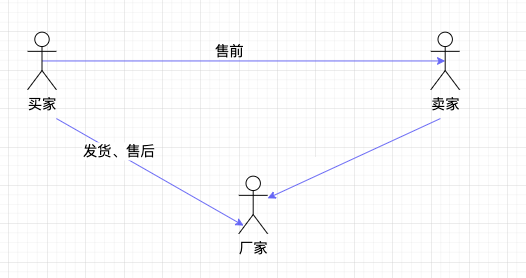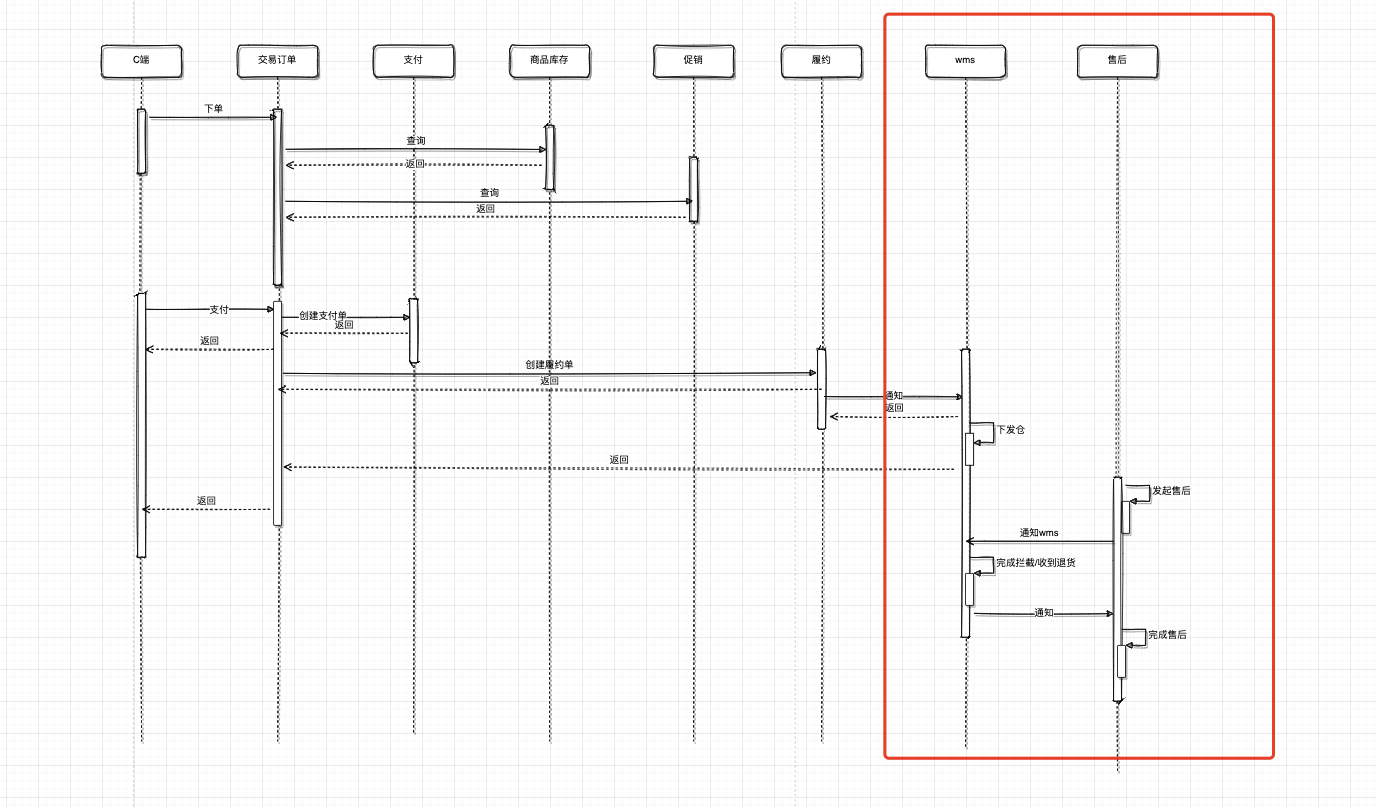Talk about a popular distribution mode of popular e -commerce
Author:Everyone is a product manager Time:2022.07.14
Editor: With the development of the e -commerce industry, even if you do not leave home, you can buy the goods you want across provinces or even cross -border. What kind of model is behind this? The author of this article introduces one of the e -commerce models -one generation, let's take a look.

As a consumer, we can buy all the products we need on the market, as large as furniture appliances, small to daily department stores. Where there is demand, there is a buy and sale.
When I was still very young, a series of trading and transactions we did can only be completed offline. A set of small toys that I bought from a big city for me is very novel for my younger.
Times are progressing. With the development of the e -commerce industry, consumers can now buy the products they want across provinces or even cross -border even if they are not leaving home. As a consumer and trading product, I can't help but be curious. What kind of model is behind this? Today I will introduce to you a very popular e -commerce model in the industry: a generation.
1. Commodity
Consumption is inseparable from goods. Among the hundreds of millions of products, what products do merchants choose to sell and what are the standards. Before entering the theme, first look at the two attribute characteristics of the product. The attributes of the product can be summarized as two: frequency and gross profit.
1. Concept explanation
Frequency: The frequency is well understood. Here refers to the profit of the number of times the purchased: gross profit is the profit obtained when the product is sold and the fixed cost is not available. Here we must compare the concept of a concept called net profit. A fruit shop was opened, mainly selling apples, mango, and bananas. This month, the total sales of the fruit were 10,000 yuan, the price of fruit was 6,000 yuan, and the monthly rent, hydropower, and human input cost were 1,000 yuan.
Then the gross profit of the little king's fruit shop this month = 10000-6000 = 4000 yuan; net profit = 10000-6000-1000 = 3000 yuan
Smart you must guess the difference between gross profit and net profit:
Gross profit = sales income-sales cost
Net profit = sales income-sales cost-fixed expenditure
Calculation formula:
Gross profit margin = [(sales income-sales cost)/sales income] 100%
Net interest rate = net profit/ sales income 100%= (sales income-sales cost-fixed income)/ sales income*100%

The two attributes of the goods include frequency and gross profit. According to the 4 -quadrant, it will be divided into four types of products: high gross high purchase frequency, low gross profit frequency, low gross profit frequency, and low gross profit.
The high purchase frequency of gross profit is high. For example, the quality of the product can be guaranteed, and the quality of the product can be guaranteed. High, such as daily necessities, food, can be used as drainage products, which can improve the low purchase frequency of user interaction gross profit. The main role is supplemented with rich categories. Although it may not be sold, it must be there. Create a one -stop atmosphere for users to choose their own cooperation brands based on these four dimensions to enrich their products of their own shops
Second, what is a generation
1. own warehouse mode
Generally, the general supply chain model in the industry is mainly divided into two categories. The first category is its own storage capabilities. Putting goods and materials in its own warehouses, internal employees are responsible for packaging and delivery.
Common generally, such as some brands, have their own storage capabilities. The advantage of this model is that the pricing power and the after -sales standards are all based on it. It can also improve the user experience. The delivery rate can be guaranteed, and the unified packaging can also improve the quality.
However, the disadvantage is that the cost of storage is high, the cost of labor and venue costs is relatively high. Generally, there are great requirements for gross profit for their own warehouses. Low gross profit will inevitably lead to losses.
Role definition:
Buyer: For consumers, his core demand is to buy cheap products, so he does not pay attention to whether the seller is a manufacturer. Whoever can bring him the lowest price under the same quality, he will choose to choose Who. Seller: The seller is the manufacturer. It is responsible for the pre -sale, delivery, and after -sales. The concept of [manufacturer direct sales], which had been popular for a while, was to create a no -middle business earning difference and more affordable prices to attract consumers. However, once the sales are poor, the supply of flowing water is insufficient, the cost of fixed expenditure of warehousing and manpower cannot be avoided. Whether it can be truly profitable, I personally feel that it is relatively difficult.

2. One generation
The second is that there is no own position power, which belongs to a generation mode. So what is a generation? In fact, a generation mode mainly solves the problem of selling sellers without the establishment of warehousing capabilities.
Role definition:
Buyer: Ibid, consumers who buy goods. Seller: After signing a contract with the manufacturer, the seller is responsible for sale as a dealer and earns the difference. The manufacturer is responsible for shipping and after -sales. Obviously, this model is a "light -fitting" for sellers, and there is no need to bear the fixed costs such as various manpower and venues. However, because it is not controlled by myself, the time limit for delivery cannot be controlled, and the product packaging may not be uniform, and the user experience is average. Manufacturer: For manufacturers, everyone is your seller and can quickly sell them through different channels. Similarly, the sales capacity of different merchants is different, it is likely that manufacturers have invested in the labor cost of delivery and connecting each merchant. However, due to the weak sales capacity of the merchant itself and the high after -sales return rate, the manufacturer finally lost money and no longer renewed cooperation. 3. How to support different business models in the trading system

In different business models, is there any difference between interaction between systems?
As shown below, the role of participating in the trading link is as follows:
C -end/business background: As a user trigger an order -oriented inlet transaction order: Perform data consistency verification, query promotion, goods, inventory for calculating commodity inventory: After data consistency check Inventory performance: After the payment is successful, the order notify the performance of the contract, and the virtual commodity is over the process of the process; for physical products, the performance system is issued to WMS, notified the shipment WMS: WMS will be issued under the designated position, the printed printing is completed, the outlet is issued, the outlet is issued Library, the system will automatically return to the unilateral after -sales: When launching the after -sales sales, notify the cargo to intercept the cargo. For the distribution mode, the process of [ordering positions] [single number returned] [after confirming the return can be carried out after the return] of the entire process.] The logical restrictions related to the warehouse, such as freight, such as restricting delivery areas, can only be manually restricted.
Fourth, personal thinking

In my work experience, we not only take over the operating mode of the self -operated warehouse, but also the operation mode of this generation. In the division of the post, the storage is part of the supply chain. The chain business itself or the system is a very complicated set of logic. For companies that just want to choose a new e -commerce track for testing, a generation model is the best choice.
This time, I mainly tried to sort out a model of this generation. For the self -operated warehouse, I have not had the opportunity to go deep into the warehouse to investigate and practice. I am worried that I will repeat it.
#Columnist#
Yan Xiu'er, WeChat public account: Yan Xiuer, everyone is a product manager columnist. Continuous precipitation and continuous growth trading products.
The original published in this article is that everyone is a product manager.
The title map is from Unsplash, based on the CC0 protocol
- END -
Green brick gray tiles, green meaning ... Liang Ping's ancient homestay has the poems and distant places you want

Fluttering and dyeing summer warm and prosperousWhen the turbulent waves swept the...
Lingang Street, Tanghe County: Get more and create "five stars", the atmosphere is so enthusiastic and high
Since the establishment of the Five Star Branch, Lingang Street in Tanghe County has taken the initiative to take the initiative to plan in advance, and take the conceptual ability style constructi